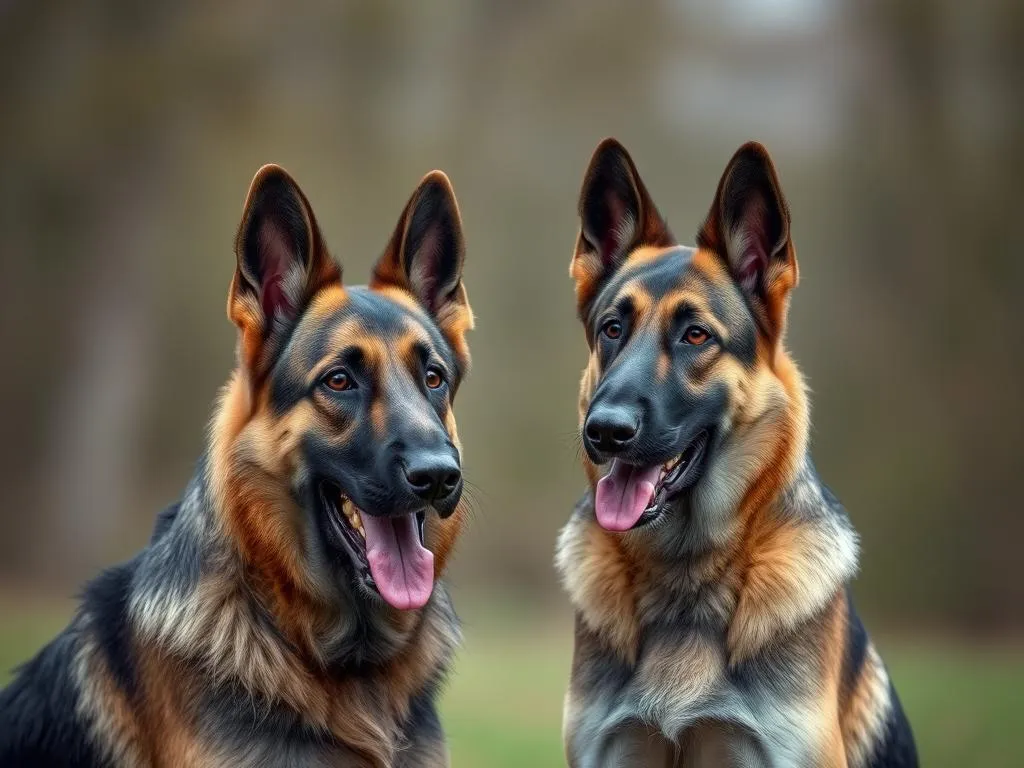
The Belgian Tervuren and Malinois are two distinct breeds that hail from Belgium, both known for their intelligence, loyalty, and versatility. Understanding the differences and similarities between these breeds is crucial for potential dog owners who are looking for the right companion. This article will explore various aspects of both breeds, helping you make an informed decision about which dog might be the best fit for your lifestyle.
Breed History
Belgian Tervuren
The Belgian Tervuren is one of four varieties of the Belgian Shepherd, each named after a town in Belgium. The breed originated in the late 19th century when Belgian dog fanciers sought to create a herding dog that could excel in various roles, including guarding and herding. The Tervuren was primarily developed in the village of Tervuren, where breeders focused on creating a dog with a striking appearance, agile movements, and a keen intelligence.
Historically, the Tervuren was used as a herding dog, but its versatility allowed it to take on roles in police work, search and rescue, and even as therapy dogs. The breed is known for its protective instincts and strong work ethic, making it a valuable asset in various fields.
Belgian Malinois
The Belgian Malinois, another variety of the Belgian Shepherd, shares a similar history. Developed around the same time as the Tervuren, the Malinois was bred for herding and has a reputation for being an exceptional working dog. The breed takes its name from the city of Malines in Belgium, where it was first recognized for its agility, intelligence, and trainability.
The Malinois has gained significant popularity in recent years, especially as a working dog in law enforcement and military roles. Their high energy levels, keen senses, and strong desire to please make them ideal candidates for complex tasks, such as detection work and protection.
Physical Characteristics
Size and Weight
Both the Belgian Tervuren and the Malinois are medium-sized dogs, but there are some differences in their physical attributes.
-
Belgian Tervuren: The average height ranges from 22 to 26 inches (56 to 66 cm) at the shoulder, with a weight between 40 to 65 pounds (18 to 29 kg). They tend to have a more robust build compared to the Malinois.
-
Belgian Malinois: This breed usually stands between 22 to 26 inches (56 to 66 cm) tall as well, but their weight is slightly less, typically ranging from 40 to 80 pounds (18 to 36 kg). The Malinois is often leaner and more agile in appearance.
Coat and Color
The Belgian Tervuren features a long, double coat that is dense and soft, providing protection against the elements. Their coat colors can range from fawn to mahogany, often with a black mask and tips on the ears and tail.
In contrast, the Malinois has a short, straight coat that is easy to maintain. The most common color is a rich fawn with a black mask; however, they may also have slight variations in color. The shorter coat of the Malinois makes them more suited for warmer climates.
Lifespan and Health Considerations
The average lifespan for both breeds is around 12 to 14 years. However, they are predisposed to certain health issues.
-
Belgian Tervuren: Common health concerns include hip dysplasia, eye problems, and certain skin conditions. Regular vet check-ups and a healthy diet can mitigate many potential health issues.
-
Belgian Malinois: This breed is also prone to hip dysplasia and certain genetic disorders, including progressive retinal atrophy. It’s essential for Malinois owners to obtain their dogs from reputable breeders who screen for these conditions.
Temperament and Behavior
General Temperament
The Belgian Tervuren is known for its affectionate nature and strong loyalty to its family. They tend to be protective, making them excellent watchdogs. Tervurens are generally calm but require daily mental and physical stimulation to prevent boredom.
On the other hand, the Malinois is often more energetic and driven. They are playful and eager to engage in activities, making them great companions for active families. While both breeds are intelligent and trainable, the Malinois may require more structured activities to channel their energy effectively.
Trainability
Both breeds are highly trainable due to their intelligence, but the Malinois often outshines the Tervuren in terms of versatility in training. Their eagerness to please and high energy levels mean they excel in obedience, agility, and protection training. However, this can lead to challenges if not adequately managed, as a bored Malinois can develop undesirable behaviors.
The Belgian Tervuren, while also trainable, may require a more patient approach. They respond well to positive reinforcement and can become anxious if training is too rigorous. Keeping training sessions fun and engaging is key to success with this breed.
Compatibility with Families
Both breeds can thrive in family environments, but there are differences to consider. The Belgian Tervuren is often more suited for families with children due to their gentle and nurturing temperament. They tend to be more patient and can develop strong bonds with kids.
The Belgian Malinois, while affectionate, may be more energetic and exuberant, which could be overwhelming for very young children. They can coexist well with kids, but supervision during playtime is advisable to prevent accidents.
Exercise and Activity Needs
Energy Levels
Both the Belgian Tervuren and Malinois are high-energy breeds, requiring substantial daily exercise to stay healthy and happy.
-
The Tervuren benefits from around 60 to 90 minutes of exercise daily, which can include walks, playtime, and mental challenges.
-
The Malinois often demands even more, requiring 90 to 120 minutes of exercise each day. They thrive on activities that challenge their intellect and physical abilities, such as agility training, fetch, or obedience classes.
Ideal Living Conditions
When considering living conditions, both breeds are best suited for homes where they have space to roam and play.
-
Belgian Tervuren: While they can adapt to apartment living, access to a yard is ideal. Regular outdoor time is essential to provide mental stimulation and socialization opportunities.
-
Belgian Malinois: This breed is less suited for apartment living due to its high energy levels. They thrive in environments with ample space for exercise and often do best in homes with secure, fenced yards.
Grooming and Maintenance
Grooming Needs
The Belgian Tervuren requires more grooming due to its longer coat. It’s recommended to brush their fur at least once a week, with more frequent brushing during shedding seasons. Regular grooming helps prevent matting and reduces shedding.
The Belgian Malinois, with its shorter coat, requires less maintenance. A weekly brushing should suffice to keep their coat healthy and free of loose hair. Both breeds will require regular nail trimming and ear cleaning to maintain grooming standards.
Health Maintenance
Routine veterinary care is vital for both breeds.
- Regular check-ups and vaccinations are necessary to monitor their health and address potential issues early.
- Dental care is often overlooked but is crucial. Investing in dental chews or regular brushing can help maintain oral health.
Cost of Ownership
Purchase Price
The cost of acquiring a Belgian Tervuren or Malinois can vary significantly depending on factors such as breeder reputation, lineage, and geographical location.
-
Belgian Tervuren: The average purchase price ranges from $1,000 to $2,500, depending on the dog’s pedigree and the breeder’s reputation.
-
Belgian Malinois: The Malinois tends to be slightly less expensive, with prices typically ranging from $600 to $2,000. However, top-quality working line Malinois can exceed these averages.
Ongoing Costs
The ongoing costs of caring for either breed can add up quickly.
-
Monthly expenses for food, grooming, and vet care can range from $100 to $300, depending on the dog’s size, health needs, and chosen food quality.
-
Potential costs related to training classes, activities, and equipment should also be factored in, particularly for the Malinois, which may require more structured training.
Pros and Cons of Each Breed
Belgian Tervuren
Advantages:
– Affectionate and gentle with families.
– Protective instincts make them excellent watchdogs.
– Intelligent and trainable, excelling in various roles.
Disadvantages:
– Requires regular grooming due to a long coat.
– Can be prone to anxiety if not properly socialized.
– May be less energetic than Malinois, requiring a gentler approach to training.
Belgian Malinois
Advantages:
– Highly energetic and playful, perfect for active families.
– Excellent trainability and versatility in working roles.
– Strong protective instincts and loyalty.
Disadvantages:
– Higher energy levels demand more exercise and mental stimulation.
– May not be well-suited for families with very young children.
– Shorter coat requires less grooming but can still shed significantly.
Conclusion
In summary, the Belgian Tervuren and Malinois are both remarkable breeds with unique traits and characteristics. While they share a common heritage and many similarities, their differences in temperament, exercise needs, and grooming requirements make them suited for different types of owners.
When choosing between the two, it’s essential to consider your lifestyle, activity level, and family dynamics. Each breed has its strengths and challenges, and understanding these elements will help you find the right companion for your home. Ultimately, both breeds can bring joy, companionship, and loyalty to their families, making them excellent choices for devoted dog owners.









